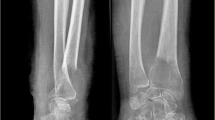Abstract
Central giant cell lesion (CGCL) and peripheral giant cell lesion (PGCL) of the jaws are characterized by multinucleated osteoclast-like giant cells in a background of mononuclear cells. While mononuclear cells retain proliferative activity in both lesions, giant cells are Ki-67 negative. This observation raised the theory that giant cells are formed by cytoplasmic fusion of mononuclear cells, and also that these lesions are of reactive nature. As the giant cells are not proliferating in CGCL and PGCL, apoptosis of such cells should be investigated. We investigated the transcription of BAX and BCL-2 mRNAs in six fresh samples of CGCL and six fresh samples of PGCL by qRT-PCR (quantitative reverse transcription PCR) and used immunohistochemistry to demonstrate the localization of these proteins, as well as caspase 3 active in six paraffin-embedded samples of CGCL and nine paraffin-embedded samples of PGCL. While both groups showed increased expression of BAX and BCL-2 mRNA, PGCL showed a higher apoptotic index (ratio BAX/BCL-2) than CGCL. The three proteins investigated were expressed almost exclusively in the cytoplasm of giant cells. To further confirm apoptotic activity, we performed TUNEL analysis in the same samples of the immunohistochemistry and found a higher positivity in the giant cells of PGCL compared to the giant cells of CGCL. Our results show increased expression of apoptotic-related genes in both PGCL and CGCL and that the giant cells are probably the main source of these events. Also, it raises a hypothesis that differences in the apoptotic activity might be associated with the different clinical behavior of CGCL and PGCL.




Similar content being viewed by others
References
Kruse-Losler B, Diallo R, Gaertner C, Mischke KL, Joos U, Kleinheinz J. Central giant cell granuloma of the jaws: a clinical, radiologic, and histopathologic study of 26 cases. Oral Surg Oral Med Oral Pathol Oral Radiol Endod. 2006;101(3):346–54.
de Lange J, van den Akker HP, van den Berg H. Central giant cell granuloma of the jaw: a review of the literature with emphasis on therapy options. Oral Surg Oral Med Oral Pathol Oral Radiol Endod. 2007;104(5):603–15.
Horner K. Central giant cell granuloma of the jaws: a clinico-radiological study. Clin Radiol. 1989;40(6):622–6.
Katsikeris N, Kakarantza-Angelopoulou E, Angelopoulos AP. Peripheral giant cell granuloma. Clinicopathologic study of 224 new cases and review of 956 reported cases. Int J Oral Maxillofac Surg. 1988;17(2):94–9.
Itonaga I, Hussein I, Kudo O, et al. Cellular mechanisms of osteoclast formation and lacunar resorption in giant cell granuloma of the jaw. J Oral Pathol Med. 2003;32(4):224–31.
Souza PE, Mesquita RA, Gomez RS. Evaluation of p53, PCNA, Ki-67, MDM2 and AgNOR in oral peripheral and central giant cell lesions. Oral Dis. 2000;6(1):35–9.
Mighell A. PCNA and p53. Eur J Canc B Oral Oncol. 1995;31B(6):403–4.
O’Malley M, Pogrel MA, Stewart JC, Silva RG, Regezi JA. Central giant cell granulomas of the jaws: phenotype and proliferation-associated markers. J Oral Pathol Med. 1997;26(4):159–63.
Bonetti F, Pelosi G, Martignoni G, et al. Peripheral giant cell granuloma: evidence for osteoclastic differentiation. Oral Surg Oral Med Oral Pathol. 1990;70(4):471–5.
Amaral FR, Brito JA, Perdigao PF, et al. NFATc1 and TNFalpha expression in giant cell lesions of the jaws. J Oral Pathol Med. 2010;39(3):269–74.
Duarte AP, Gomes CC, Gomez RS, Amaral FR. Increased expression of NFATc1 in giant cell lesions of the jaws, cherubism and brown tumor of hyperparathyroidism. Oncology Letters. 2011; doi:10.3892/ol.2011.274.
Sasi N, Hwang M, Jaboin J, Csiki I, Lu B. Regulated cell death pathways: new twists in modulation of BCL2 family function. Mol Canc Therapeut. 2009;8(6):1421–9.
Certo M, Del Gaizo Moore V, Nishino M, et al. Mitochondria primed by death signals determine cellular addiction to antiapoptotic BCL-2 family members. Canc Cell. 2006;9(5):351–65.
Antonsson B. Bax and other pro-apoptotic Bcl-2 family “killer-proteins” and their victim the mitochondrion. Cell Tissue Res. 2001;306(3):347–61.
Creagh EM, Martin SJ. Caspases: cellular demolition experts. Biochem Soc Trans. 2001;29(Pt 6):696–702.
Nicholson DW, Ali A, Thornberry NA, et al. Identification and inhibition of the ICE/CED-3 protease necessary for mammalian apoptosis. Nature. 1995;376(6535):37–43.
Abdo EN, Alves LC, Rodrigues AS, Mesquita RA, Gomez RS. Treatment of a central giant cell granuloma with intralesional corticosteroid. Br J Oral Maxillofac Surg. 2005;43(1):74–6.
Carvalho VM, Perdigao PF, Pimenta FJ, de Souza PE, Gomez RS, De Marco L. A novel mutation of the SH3BP2 gene in an aggressive case of cherubism. Oral Oncol. 2008;44(2):153–5.
Carvalho VM, Perdigao PF, Amaral FR, de Souza PE, De Marco L, Gomez RS. Novel mutations in the SH3BP2 gene associated with sporadic central giant cell lesions and cherubism. Oral Dis. 2009;15(1):106–10.
Oltvai ZN, Milliman CL, Korsmeyer SJ. Bcl-2 heterodimerizes in vivo with a conserved homolog, Bax, that accelerates programmed cell death. Cell. 1993;74(4):609–19.
Pammer J, Weninger W, Hulla H, Mazal P, Horvat R. Expression of regulatory apoptotic proteins in peripheral giant cell granulomas and lesions containing osteoclast-like giant cells. J Oral Pathol Med. 1998;27(6):267–71.
Chuong R, Kaban LB, Kozakewich H, Perez-Atayde A. Central giant cell lesions of the jaws: a clinicopathologic study. J Oral Maxillofac Surg. 1986;44(9):708–13.
Acknowledgments
This study was supported in part by grants from Fundação de Amparo à Pesquisa do Estado de Minas Gerais (FAPEMIG) and by Conselho Nacional de Desenvolvimento Científico e Tecnológico (CNPq), Brazil. Dr. Bernardes VF and RS Gomez are research fellows of CNPq.
Conflicts of interest
None.
Author information
Authors and Affiliations
Corresponding author
Rights and permissions
About this article
Cite this article
Amaral, F.R., Bernardes, V.F., Duarte, A.P. et al. Quantitative expression analysis of apoptotic/antiapoptotic genes and association with immunolocalization of BAX and BCL-2 in peripheral and central giant cell lesions of the jaws. Tumor Biol. 32, 997–1003 (2011). https://doi.org/10.1007/s13277-011-0201-6
Received:
Accepted:
Published:
Issue Date:
DOI: https://doi.org/10.1007/s13277-011-0201-6




